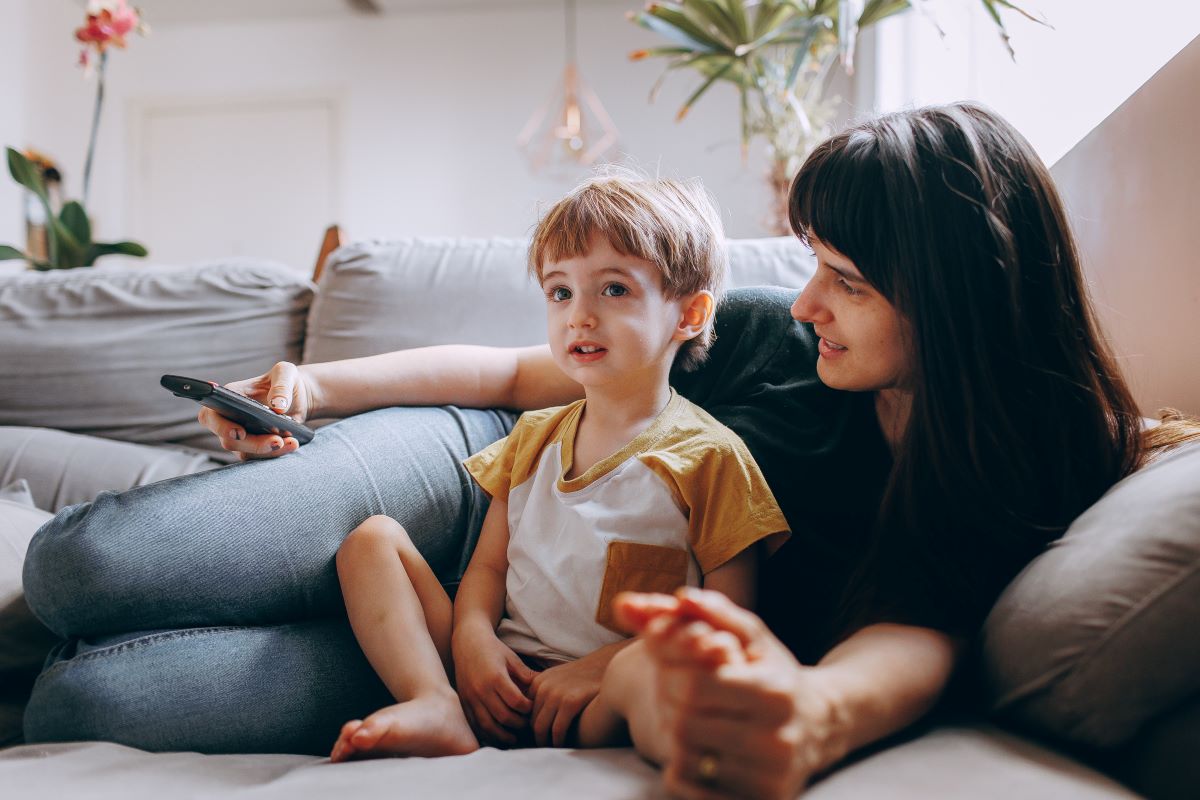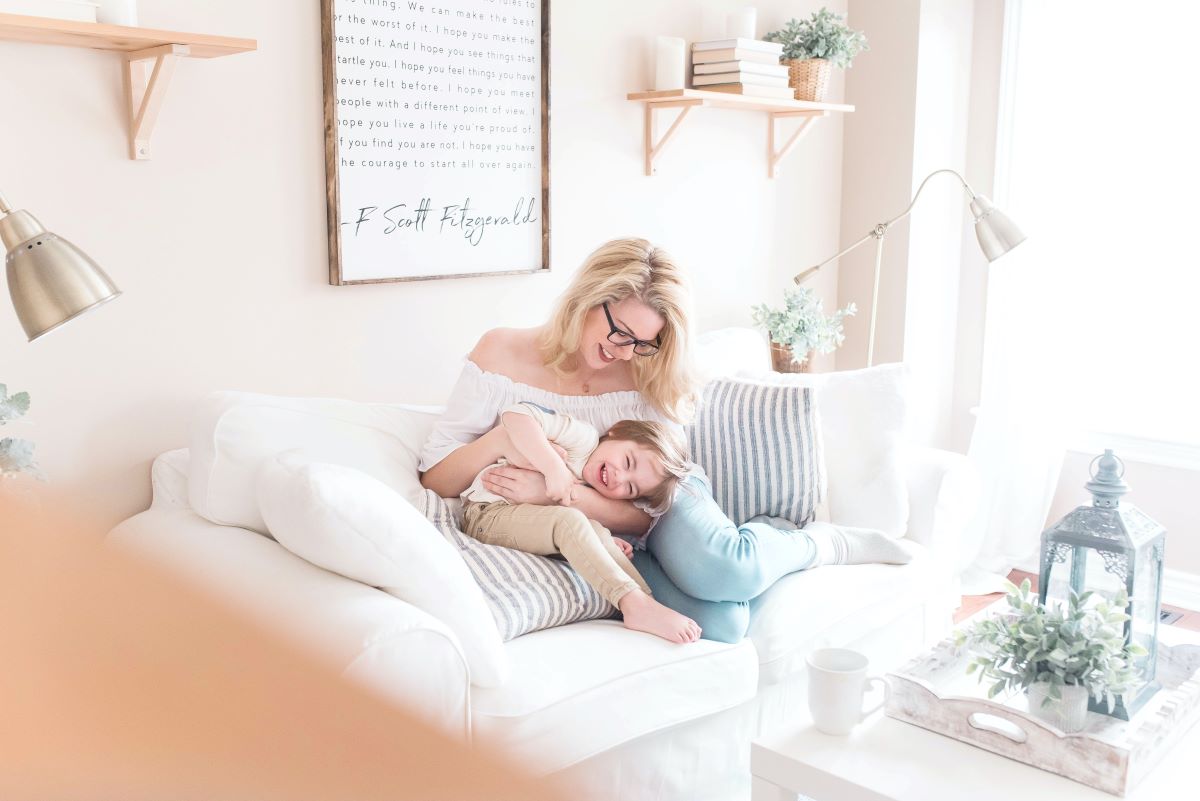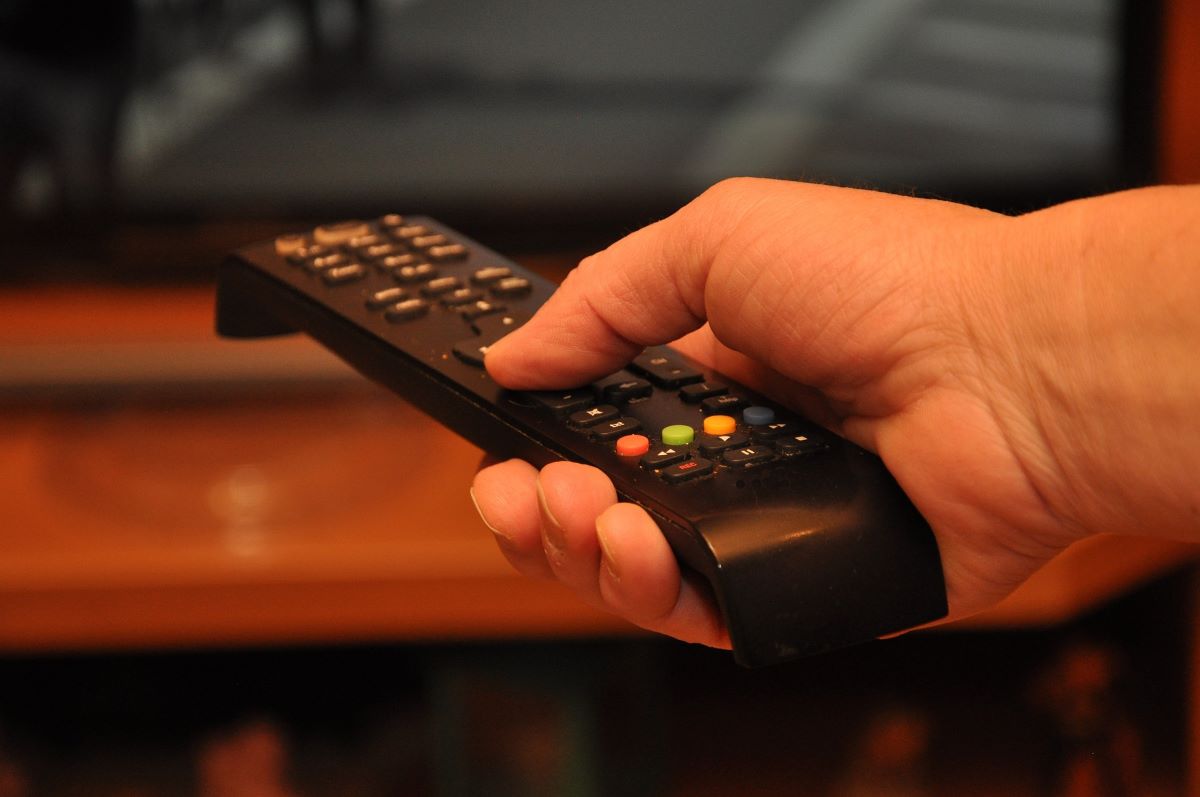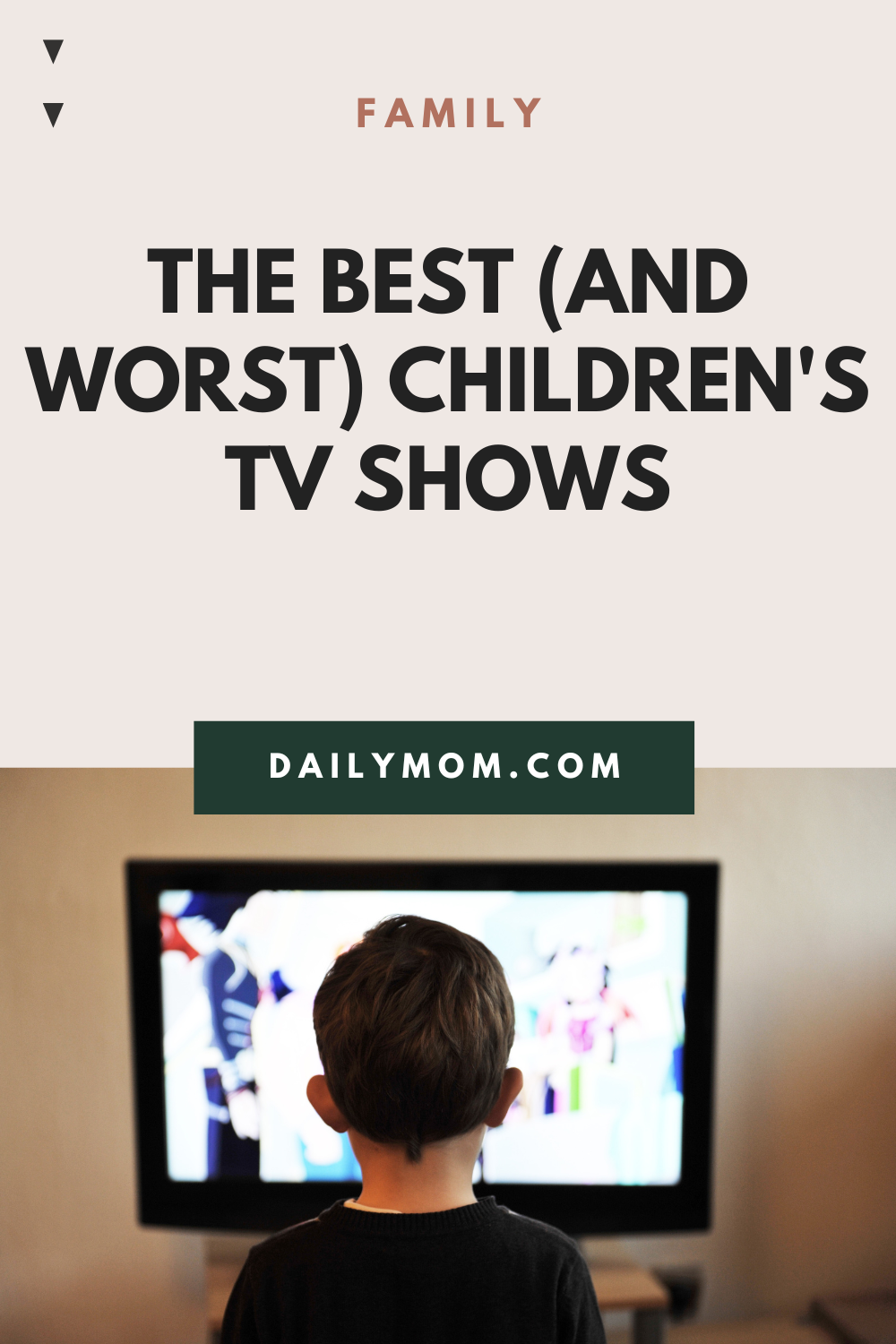Many parents rely on children’s TV shows for their sanity (hello, witching hour!). But did you know that certain children’s TV shows are actually REALLY bad for your little one? If you’ve been dealing with tantrums, meltdowns, or hyperactivity, the type of TV show you’re letting your kiddo watch could be to blame. Read on to discover how to distinguish the best children’s TV shows from the worst (and why it MATTERS!)

Why Choosing the Right TV Show Matters
The bottom line: If a TV show doesn’t have high ratings, it won’t make money. Children’s TV shows are literally made to be overstimulating and addicting to your child. Many shows intentionally overstimulate your child so that they want to keep watching it over and over. If your child is constantly begging you to turn on a TV show and throws a tantrum when the show is over or the tv is turned off, it’s a sign that the show was overstimulating for your little one.
These “children’s” shows cause addiction similar to that of a dopamine hit, which can negatively affect their development in the long run. According to a study for the American Academy of Pediatrics, “Just 9 minutes of viewing a fast-paced television cartoon had immediate negative effects on 4-year-olds’ executive function” This means that it affects things such as their self-regulation or working memory.
In fact, researchers in Japan conducted a study of kids between the ages of 5 and 18 who watched, on average, about two hours of television a day. They discovered that the more TV a child watched, the larger certain parts of the brain were. In this case, bigger is NOT better. Grey matter volume was higher in areas toward the front and side of the head in children who watched a lot of TV, which means that higher brain volume was associated with a lower verbal IQ.
Read more: The Exploration of Play Therapy for Children
Many times parents assume that if their child is showing signs of hyperactivity and poor focus, they assume that their child could be on the autism spectrum. That was the case for former educator Jerrica Sannes and her husband, who thought their four-year-old son was on the autism spectrum due to displaying some of these behaviors. They soon realized that changing the kinds of shows he watched transformed him into a different child. Her son went from being angry and hyperactive to calmer, happier, and more patient.
Jerrica was so stunned by how something so simple could have such an effect on her children’s behavior that she created a website dedicated to educating parents on alternatives to “hyper-stimulating shows that cause symptoms of addiction and withdrawals”.

Signs of Overstimulation
As mentioned previously, these children’s TV shows intentionally overstimulate your child so that they are left begging for more. But the big question is, “how do I know if a show is overstimulating to my child?”
While your child is watching the show, look to see if they are chewing on their fingers or clothes. They also could be moving their body constantly without being able to sit still. Many children who are overstimulated will be in a zombie-like state where they are unaware of you speaking to them or anything else going on around them. You might even notice that they have zombie-like eyes that are unable to waver from the screen.
When the show is over, observe your child’s behavior. Are they laughing hysterically afterward or showing hyperactivity? These are signs that the show was overstimulating. Your child may also demonstrate having trouble making eye contact. Many children will even throw tantrums after the show is over and could also demonstrate aggressive behavior.


How to Choose Great Children’s TV Shows
So now that you’re aware of the negative effects of these addicting children’s TV shows, you need to know how to filter out the “good” shows from the “bad”. One of the biggest red flags in a children’s TV show is when the show has saturated primary colors. Some of the more dated children’s TV shows (think- 80’s and 90’s shows) do not have nearly the amount of saturated primary colors as the shows today do. So, when assessing today’s TV shows, muted color tones are best. These color tones are calming and will not detract from the storyline of the show.
You should also avoid shows that have scenes less than 4 seconds long as they will overload your little one’s brain. Your child’s brain simply cannot process information that fast nor develop any sort of thought on the show’s storyline. In fact, a study showing the effects of TV program pacing on the behavior of preschool children states, “to give a child 30 seconds of one thing and then to switch it and give them 30 seconds of another is to nurture irrelevance”.
Children’s TV Shows that are slow-paced as well as non-interactive help your child develop a deeper understanding of the storyline and develop critical thinking skills regarding the characters, setting, and plot. Mesmerizing animation is another culprit of addicting children’s TV shows. If the show has objects flying around in a pattern as well as “spiraling” effects, odds are your child will have a hard time taking their eyes off of it. Shows should have realistic movements that are not at all mesmerizing or repetitive.
Read More: Teaching Children About World Peace and Why It Is So Important
It is also important to note that overstimulation can come from more than just animation. Children’s TV Shows that have multiple sounds at once can also be overstimulating to your little one as they usually have trouble focusing on just one sound (think: a dog is barking, music is playing, and a bus is honking its horn all while the characters are talking). Try to look for children’s TV shows that use no more than one to two sounds at once (such as birds chirping while the characters are talking).


The Best Children’s TV Shows
This list gives a brief overview of why each show is developmentally appropriate for your child.
If you Give a Mouse a Cookie (Amazon Prime) Muted colors, slow scenes, encourages kindness
Trash Truck (Netflix) Muted color tones, slow scenes, encourages creative play
Guess How Much I Love You (Amazon Prime) Muted color tones, slow scenes, encourages prosocial skills
The Snowy Day (Amazon Prime) Muted color tones, realistic movements, promotes diversity
Stella & Sam (Amazon Prime) Muted color tones, realistic movements, encourages imaginative play
Elinor Wonders Why (PBS Kids) Muted color tones, slow scenes, encourages curiosity
Bug Diaries (Amazon Prime) Muted color tones, slower scenes, encourages nature exploration and problem-solving
Bluey (Disney) Muted color tones, slower scenes, encourages imaginative play
Puffin Rock (Netflix) Muted color tones, slow scenes, encourages kindness and nature exploration
Angela’s Christmas (Netflix) Muted color tones, encourages kindness and prosocial skills
The Worst Children’s TV Shows
This list of some of the worst TV shows goes a little more into depth on why they are not considered the best for your child’s development.
Daniel Tiger (PBS Kids) Many scenes are over-stimulating (vibrant primary colors, different sounds, many moving objects & characters)
Cocomelon (Netflix) Rapid scene changes, vibrant colors, and multiple characters make this show too stimulating for your little one
Hey Bear (Youtube) This show is literally designed to put your child in a hypnotic state (colors, rhythmic motions, and lively music all combined at once)
Go Dog Go (Netflix) This show breaks into song and dance all while using overstimulating colors and fairly rapid scene changes
Blippi (Netflix) The camera constantly zooms in and out, and overuse primary colors. Also, an adult acting like a child is weird in and of itself.
Peppa Pig (Nick Jr) Peppa Pig has bright primary colors, and the character itself is known to be whiny and disrespectful to her parents (influences toddlers to act this way). Also, the storylines are only about two minutes long which makes it hard for your child to jump from one train of thought to another.
Caitie’s Classroom (Youtube) This show actually isn’t too overstimulating. However, keep in mind that your child shouldn’t be relying on a screen to be a companion, and this show revolves on being your child’s “best friend” which is how it pulls your child into wanting to watch more.
PJ Masks (Disney) There are a ton of overstimulating effects in this show such as bright colors, flashing objects, sound effects, and rapid scene changes.
Mighty Beem (Netflix) There are very short scene changes in this show as well as a lot of noise stimulation. Also, this show demonstrates a lot of unrealistic behavior that could be confusing to a child such as a baby’s eyes spinning, or a character flying through the air.
The Wiggles (Youtube) The scenes are extremely short (around 2 seconds long each), and they take using primary colors to the extreme. They also plan their ad “breaks” around your child begging for more at the correct scenes, so that your child isn’t actually getting a break from the show at all.
In the big world of parenting, having yet another thing to worry about is not ideal. However, when it comes to your child’s behavior, attention span, and development, choosing the best children’s tv shows should take priority. Hopefully, these tips arm you to make smarter choices about your little one’s screen time so that they can flourish for years to come!
WANT TO READ MORE?
Solve your next movie night debate: 15 Best Netflix, Hulu, & Amazon Prime TV Shows to Watch Right Now.
CONNECT WITH DAILY MOM
💖 NEWSLETTER: DAILY READS IN YOUR INBOX 💖
Sign up to receive our picks for the best things to do, see and buy so you can relax and focus on more important tasks! Let us help you be the best version of yourself you can be!
BE SOCIAL WITH US
📌 LOVE IT? PIN IT!📌












































